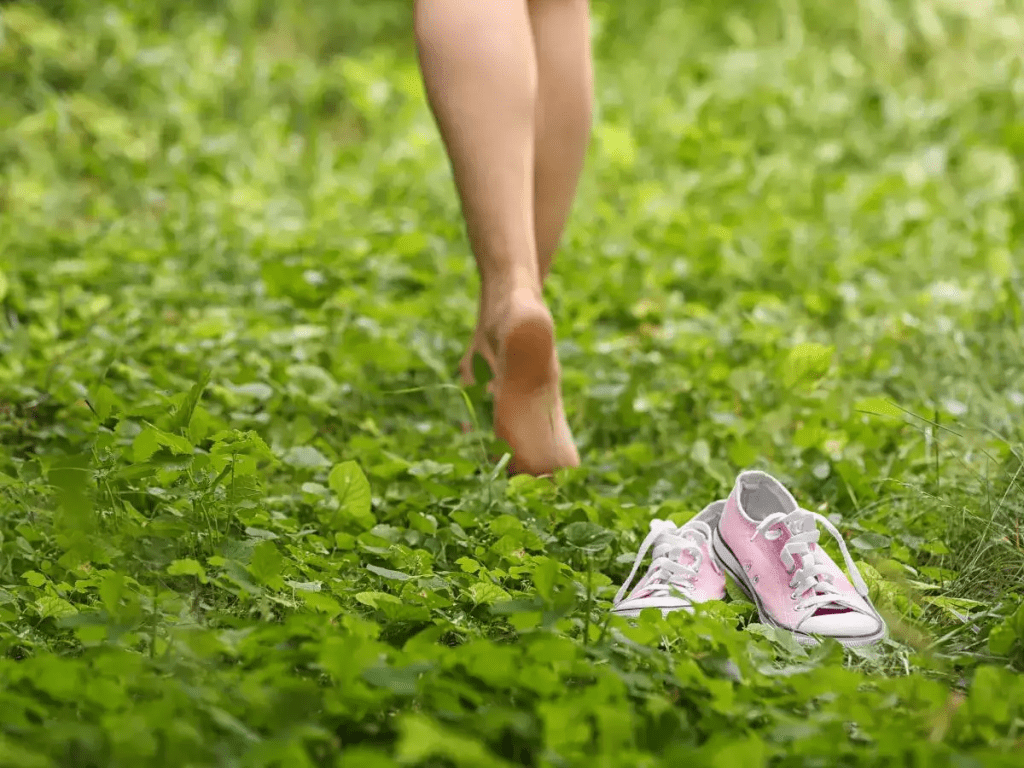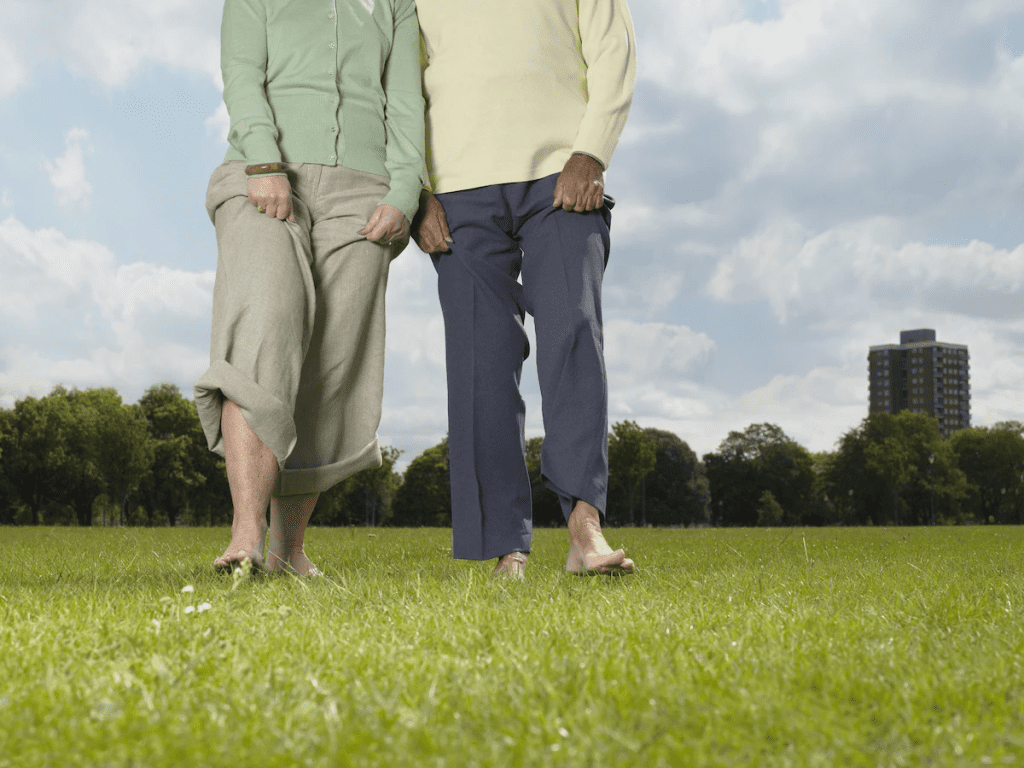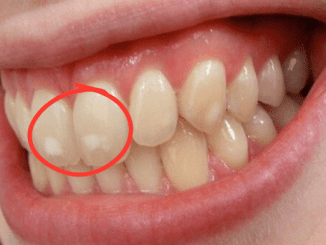In a world dominated by screens, synthetic materials, and endless commutes, the simplicity of walking barefoot on grass feels almost revolutionary. For my nana, it’s more than a habit—it’s a cherished ritual she insists keeps her grounded and healthy. But why on earth would anyone walk barefoot on grass? It turns out this age-old practice isn’t just nostalgic; it’s rooted in historical wisdom, cultural significance, and even modern science. Let’s explore why people swear by it and what it could do for your well-being.

The Historical and Cultural Roots of Barefoot Walking
Walking barefoot isn’t a new fad. It’s a timeless tradition, deeply ingrained in cultures around the world. Indigenous communities have walked barefoot for centuries, connecting directly with the earth’s surface. In Eastern practices like yoga and tai chi, barefoot walking is often seen as a way to harmonize energy flow and promote balance.
Even in the West, this concept is making a comeback. Known as “earthing” or “grounding,” it’s being embraced by wellness enthusiasts eager to escape the overstimulation of modern life. For many, the act of feeling cool grass underfoot symbolizes a return to nature—a break from the chaotic pace of the digital age.
What Is Grounding (or Earthing), Anyway?
At the heart of barefoot walking lies the concept of grounding. The theory is simple: when you walk barefoot, your body absorbs electrons from the earth’s surface. These electrons supposedly neutralize free radicals—unstable molecules that can cause inflammation and stress in the body.
Modern life, with its insulating rubber-soled shoes and endless hours indoors, has severed our natural connection to the earth. Grounding advocates believe this disconnection contributes to various health issues, from chronic inflammation to poor sleep. By literally reconnecting with the earth, they argue, we can restore balance and vitality.
The Health Benefits of Walking Barefoot on Grass
You might be wondering, “Can something as simple as walking barefoot really improve my health?” Advocates—and some scientific studies—say yes. Here’s how this practice could help:
1. Reduced Inflammation
Grounding has been linked to decreased inflammation in the body. Chronic inflammation is a major contributor to conditions like arthritis, heart disease, and autoimmune disorders. The earth’s electrons are thought to act as natural antioxidants, calming the inflammatory response.
2. Improved Sleep
Can’t seem to get a good night’s rest? Some studies suggest that grounding helps regulate the body’s natural circadian rhythm, leading to deeper, more restorative sleep.
3. Enhanced Mood and Energy Levels
Feeling drained? Barefoot walking encourages mindfulness and connection to nature, which can boost serotonin levels and reduce stress. Think of it as a natural pick-me-up—no caffeine required.

4. Better Posture and Foot Health
Walking barefoot strengthens the small muscles in your feet and encourages better posture. Without the constraints of shoes, your body naturally adjusts to a more aligned stance, reducing strain on your joints and spine.
5. Reflexology Benefits
The soles of your feet are packed with nerve endings that correspond to different parts of your body. Walking barefoot can stimulate these pressure points, promoting better circulation and organ function.
Is There Science Behind It?
While barefoot walking has its skeptics, emerging research offers some support for grounding’s potential benefits. For example, a study published in the Journal of Environmental and Public Health found that grounding could improve immune function, reduce pain, and even lower blood pressure. Another study reported enhanced recovery times for athletes who practiced grounding techniques.
That said, more research is needed to confirm these effects. But even if the science isn’t fully settled, the anecdotal evidence is compelling—and my nana’s enthusiasm is hard to ignore.
How to Safely Walk Barefoot on Grass
If you’re ready to give barefoot walking a try, here are a few tips to make it safe and enjoyable:
1. Choose the Right Spot
Pick a clean, grassy area free of sharp objects, such as glass, thorns, or rocks. Parks and private gardens are often ideal.
2. Start Slow
If you’re not used to walking barefoot, your feet might need time to adjust. Start with short sessions—5 to 10 minutes—and gradually increase the duration.
3. Pay Attention to Hygiene
Wash your feet thoroughly after walking outdoors to avoid bringing dirt or bacteria into your home.
4. Stay Mindful
Focus on the sensations underfoot. Feel the texture of the grass, the warmth of the earth, or the coolness of morning dew. This mindfulness can make the experience even more rewarding.
5. Inspect Your Feet
Check your feet regularly for cuts, scrapes, or signs of irritation, especially if you’re diabetic or have sensitive skin.

Alternatives for Those Who Can’t Walk Barefoot Outdoors
Not everyone has access to a grassy lawn or park, but that doesn’t mean you can’t reap the benefits of grounding. Here are some alternatives:
- Grounding Mats and Sheets
These products mimic the earth’s electric field, allowing you to “ground” indoors. They’re especially useful in urban environments. - Gardening or Sitting on the Ground
Simply spending time in direct contact with the earth, whether by gardening or lounging on the grass, can provide similar benefits. - Walking on Natural Surfaces
If grass isn’t available, sandy beaches, dirt paths, or even smooth river stones can offer grounding benefits.
What Are the Risks?
Though generally safe, barefoot walking does come with some risks. Sharp objects, uneven terrain, or harmful bacteria in the soil can pose hazards. If you have diabetes, neuropathy, or any condition affecting foot sensitivity, consult a healthcare professional before walking barefoot.
Why My Nana—and Maybe You—Should Keep Doing It
For my nana, walking barefoot on grass is more than a wellness trend—it’s her daily dose of joy and connection to nature. She swears by the practice for its ability to lift her mood, ease her aches, and keep her grounded—literally and figuratively. And while the science is still catching up, it’s hard to argue with the simple, timeless appeal of walking barefoot.
Conclusion: Rediscover the Earth Beneath Your Feet
Walking barefoot on grass may seem like a small act, but it’s one that invites us to slow down and reconnect—with nature, with ourselves, and with something deeper. Whether you’re curious about the health benefits or just want a moment of peace in your day, it’s worth a try. After all, as my nana would say, the best remedies are often the simplest—and sometimes they’re right under our feet.


